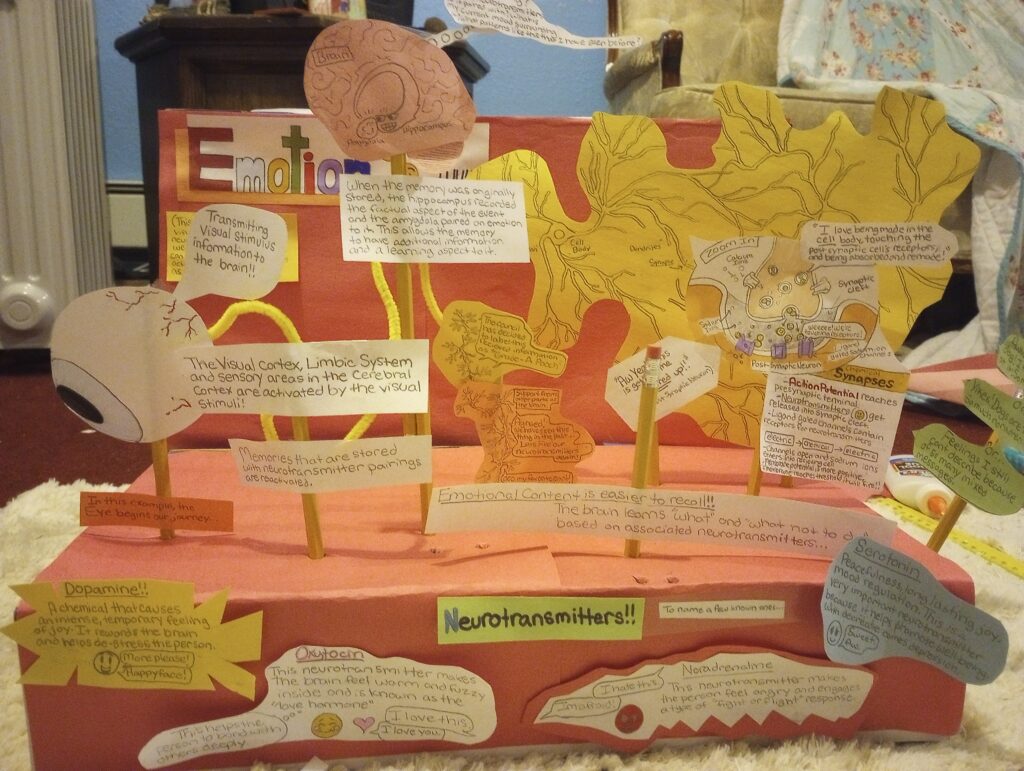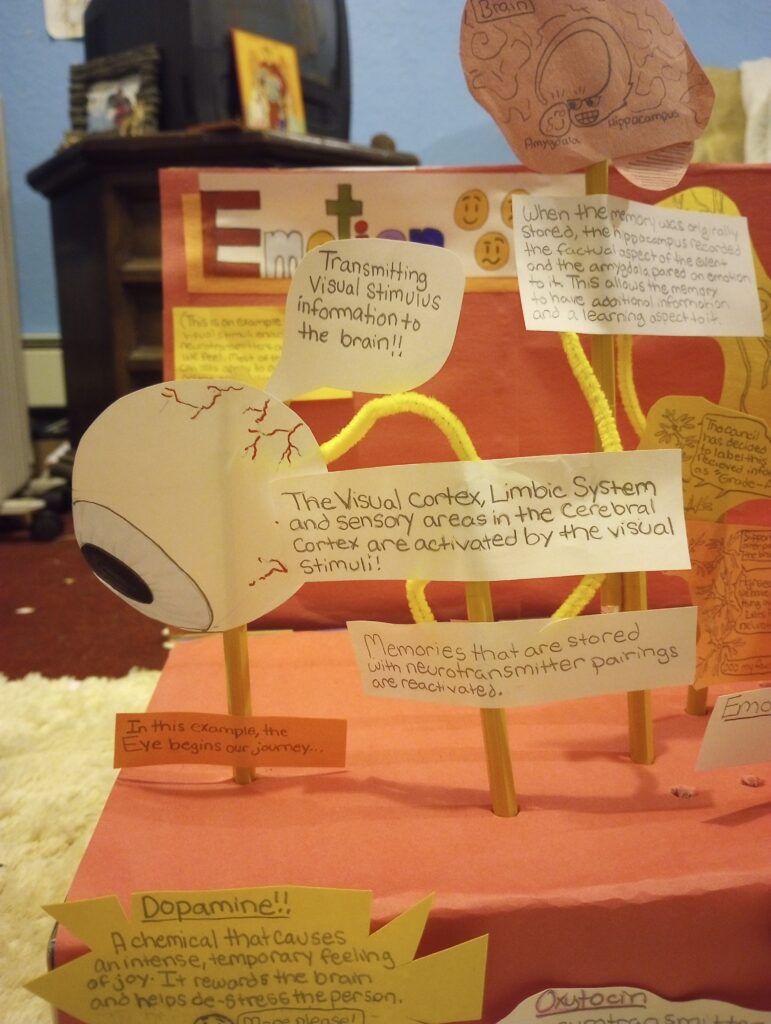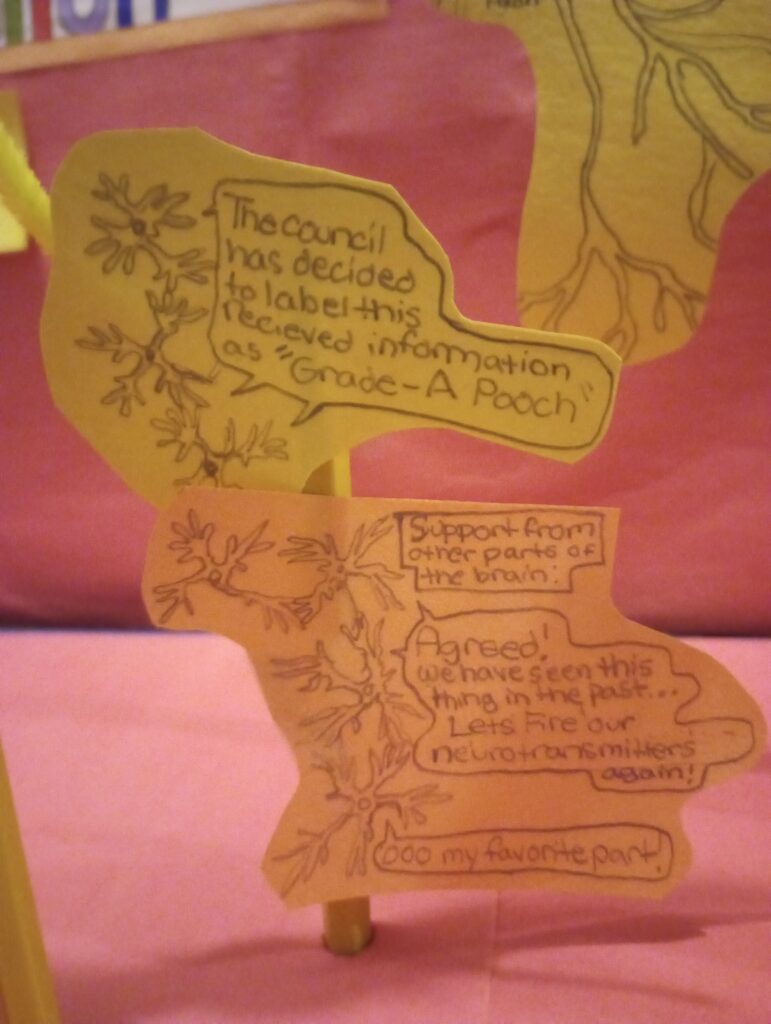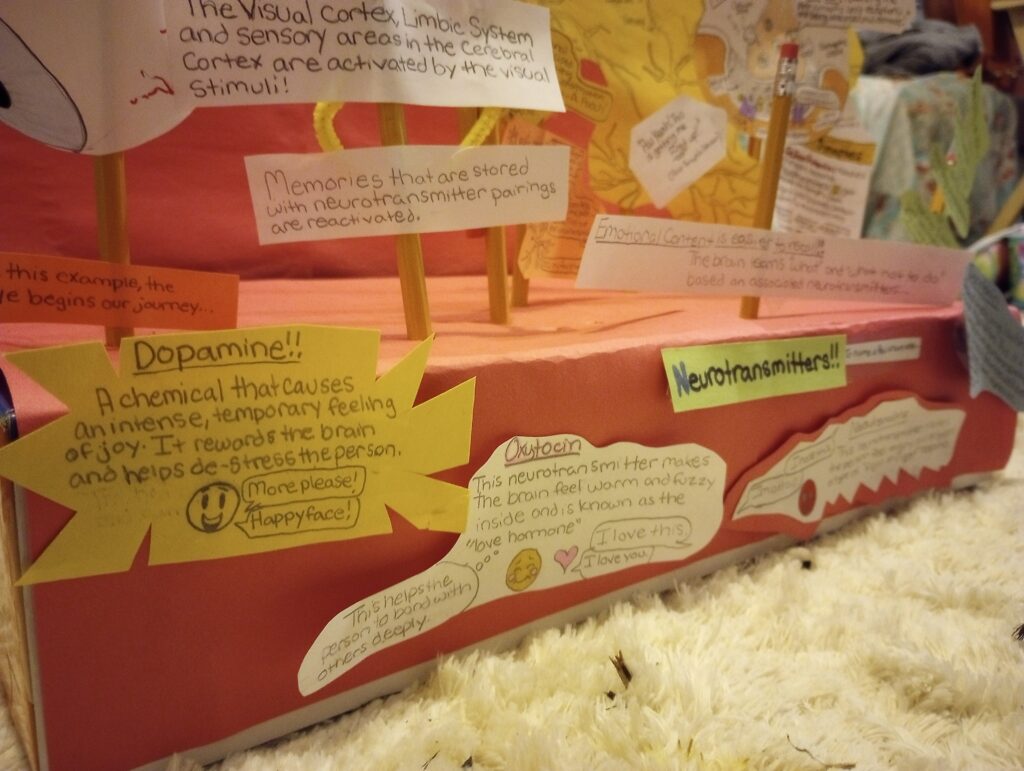


The eye has spotted a cute dog in the distance. Follow the electric path to see how the brain recognizes this stimuli and reacts emotionally because of it. Here you will find a description on how complex our simply-felt emotions work!







The eye has spotted a cute dog in the distance. Follow the electric path to see how the brain recognizes this stimuli and reacts emotionally because of it. Here you will find a description on how complex our simply-felt emotions work!



The topic of the neurological perception of emotions is fascinating. This process was well represented through a fun and colorful 3-D diagram starting with a model of the eye, where the stimuli is first perceived and sent to the neurons. Following the diagram, its clear that neurons create an action potential and fire down their axon to the synaptic cleft. From here, the signal is carried across the cleft by the neurotransmitters, triggering other neurons along the way. During the process, memories relative to the stimuli, previously recorded by the hippocampus of the brain, are triggered by the stimuli. These memories amplify and add to the emotions they cause. It is so important to maintain a balance of the neurotransmitters released, because under firing or over firing can lead to mental disorders such as depression.
I love the point made about how emotions triggered by memories and stimuli will depend on the person experiencing the input. Everyone has different memories, and the same stimuli will trigger different emotions in people because of it. It was cool to learn that different neurotransmitters released by the action potential are the cause of our range of emotions. For example: when dopamine is released, we experience happiness and joy. Oxytocin in known as the love hormone when it is released. Serotonin helps us feel peacefulness and regulate our moods. Noradrenaline sparks anger and a fight-or -light response.
Overall, the project is well constructed, and an excellent way to teach a complicated process. It was simple to follow the steps and learn something new in the process!